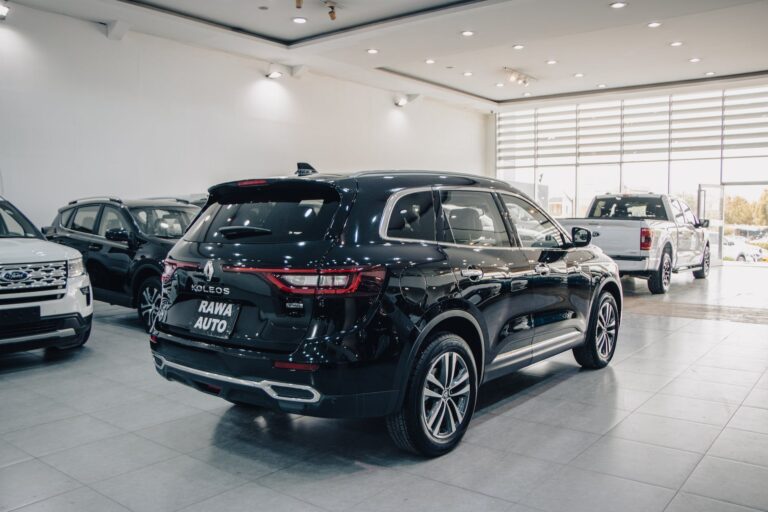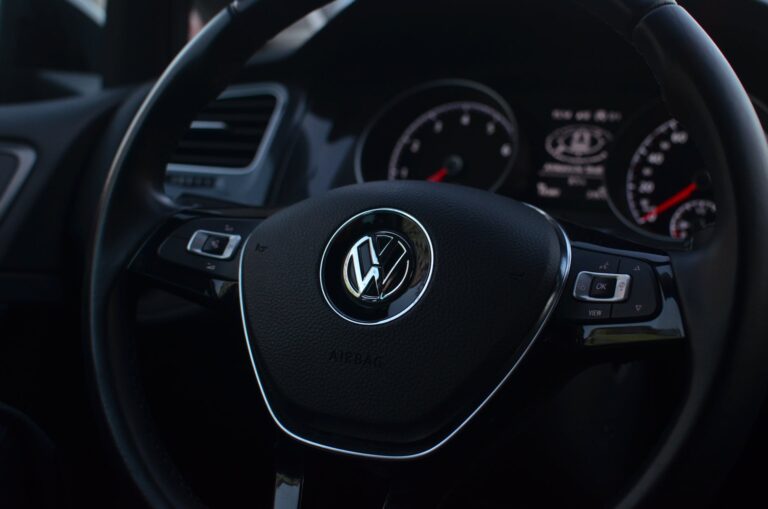The Digital Landscape in the Automotive Industry
In today’s digital age, digital marketing has become an essential component of success for car dealers. With more and more consumers turning to the internet for their automotive needs, having a strong online presence is paramount. This section will explore the importance of digital marketing for car dealers and highlight the current trends and challenges in the automotive digital marketing landscape.
The Importance of Digital Marketing for Car Dealers
Digital marketing plays a pivotal role in the automotive industry. It allows car dealers to reach a wider audience, increase brand visibility, and drive more qualified leads. With the majority of consumers conducting online research and comparison shopping before visiting a dealership, having a robust digital marketing strategy is paramount for staying competitive.
By leveraging various digital marketing channels, car dealers can showcase their inventory, promote their services, and engage with potential customers. A well-designed and user-friendly website, optimized for search engines, is crucial for attracting organic traffic and improving online visibility. Car dealers can utilize car dealer website templates to create an impactful online presence that captures the attention of potential buyers.
Additionally, digital marketing enables car dealers to target specific demographics and geographical areas, ensuring that their marketing efforts are focused and cost-effective. By employing strategies such as search engine marketing (SEM), display advertising, and remarketing, car dealers can effectively reach their target audience and drive traffic to their website.
Trends and Challenges in the Automotive Digital Marketing
The automotive digital marketing landscape is constantly evolving, with new trends and challenges emerging regularly. To stay ahead of the competition, car dealers must stay informed and adapt their strategies accordingly.
One notable trend in automotive digital marketing is the increasing importance of video marketing. Video content has proven to be highly engaging and effective in capturing the attention of potential car buyers. Car dealers can leverage automotive video marketing to showcase vehicle features, provide virtual tours, and establish trust with their audience.
Another trend is the rise of content marketing in the automotive industry. By creating valuable and informative content, car dealers can position themselves as industry experts and build credibility with their target audience. Automotive content marketing allows dealers to provide valuable information about car maintenance, buying guides, and industry news, which can attract and engage potential customers.
Despite the numerous opportunities digital marketing presents, car dealers also face challenges. One such challenge is lead generation. With the increasing competition in the digital space, attracting qualified leads can be a complex task. Car dealers can employ effective lead generation strategies, such as optimizing landing pages, utilizing social media advertising, and offering incentives, to capture valuable leads. Learn more about lead generation for car dealerships to enhance your lead generation efforts.
Navigating the digital landscape in the automotive industry requires a deep understanding of digital marketing strategies and the ability to adapt to changing trends. By staying informed about the latest trends and addressing the challenges head-on, car dealers can establish a strong online presence and drive success in the digital realm.
Building a Strong Online Presence
In the ever-evolving digital landscape, having a strong online presence is crucial for car dealers looking to thrive in the automotive industry. This section will explore two vital aspects of building this presence: optimizing your website for search engines and creating engaging and relevant content.
Optimizing Your Website for Search Engines
When it comes to digital marketing in the automotive industry, search engine optimization (SEO) plays a pivotal role in driving organic traffic to your website. By optimizing your website for search engines, you can increase its visibility and attract potential customers who are actively searching for vehicles or related services.
To effectively optimize your website, consider the following strategies:
-
Keyword Research: Identify relevant and high-performing keywords related to your dealership and the automotive industry. Incorporate these keywords naturally into your website’s content, including headings, meta tags, and image alt text.
-
Mobile-Friendly Design: With the increasing use of mobile devices, ensure that your website is mobile-responsive. A mobile-friendly design not only improves user experience but also enhances your website’s search engine rankings.
-
Page Speed Optimization: Optimize your website’s loading speed to provide a seamless browsing experience. Search engines prioritize websites that load quickly, resulting in higher rankings and improved user satisfaction.
-
User-Friendly Navigation: Create a clear and intuitive navigation structure that allows visitors to easily find the information they need. Logical categorization and well-structured menus contribute to a positive user experience.
For more detailed guidance on optimizing your website for search engines, you can explore our article on automotive website marketing.
Creating Engaging and Relevant Content
In the digital marketing realm, content is king. Creating engaging and relevant content helps establish your dealership as an authoritative source within the automotive industry. Additionally, it attracts and retains the attention of potential customers, driving them to explore your website further.
Consider the following content strategies:
-
Blog Posts: Regularly publish informative and engaging blog posts related to the automotive industry. This can include topics such as car maintenance tips, buying guides, industry news, and vehicle reviews. Incorporate relevant keywords naturally throughout your content to improve search engine visibility.
-
Video Content: With the rising popularity of video content, consider creating videos that showcase your dealership, feature vehicle walkarounds, or provide educational content. Video marketing can help you engage with your audience on a more personal level.
-
Testimonials and Reviews: Feature customer testimonials and reviews on your website. Positive feedback from satisfied customers can build trust and credibility, influencing potential buyers’ decisions.
-
Social Media Integration: Integrate your social media platforms with your website to extend your reach and engage with a wider audience. This can include sharing blog posts, promoting vehicle specials, and responding to customer inquiries.
Remember, creating high-quality and relevant content not only helps with search engine rankings but also establishes your dealership as a trusted resource for potential customers. For more information on automotive content marketing strategies, check out our article on automotive content marketing.
By optimizing your website for search engines and consistently producing engaging content, you can enhance your online presence, attract targeted traffic, and ultimately increase your chances of converting visitors into customers.
Leveraging Social Media
In today’s digital landscape, social media has become a powerful tool for businesses in the automotive industry to connect with their target audience and enhance their digital marketing efforts. By utilizing various social media platforms and engaging with customers, car dealers can establish a strong online presence and drive meaningful interactions.
Utilizing Social Media Platforms
When it comes to social media for automotive marketing, there are several platforms that can effectively reach and engage with potential customers. Some popular platforms include Facebook, Instagram, Twitter, and YouTube. Each platform offers unique features and advantages, allowing car dealers to tailor their approach based on their target audience and marketing goals.
Facebook provides a vast user base and sophisticated targeting options, making it an ideal platform for dealerships to showcase their inventory, share informative content, and connect with potential customers. Instagram, with its visually-oriented nature, is perfect for sharing eye-catching photos and videos of cars, dealership events, and behind-the-scenes content. Twitter allows for real-time updates, engaging conversations, and quick customer service responses. YouTube is an excellent platform for showcasing car videos, providing virtual tours, and sharing educational content.
By understanding the strengths and advantages of each platform, car dealers can strategically utilize social media to extend their reach and build brand awareness. For more information on automotive website marketing, including templates and designs, visit our article on car dealer website templates.
Engaging with Customers on Social Media
Engagement is key to successful social media marketing in the automotive industry. By actively interacting with customers and responding to their comments, messages, and inquiries, car dealers can foster a sense of trust, establish meaningful relationships, and enhance their brand reputation.
Car dealers can engage with customers by consistently posting relevant and engaging content. This can include updates on new car arrivals, special promotions, informative articles, customer testimonials, and even entertaining content related to the automotive industry. By providing value and entertainment, car dealers can encourage customers to like, comment, and share their posts, thereby increasing their reach and visibility.
In addition to regular posting, car dealers should actively monitor their social media accounts and promptly respond to any customer inquiries or comments. This shows a commitment to customer service and helps build trust and loyalty. By addressing customer concerns and providing helpful information, car dealers can nurture leads and convert them into satisfied customers. For more information on lead generation and nurturing, check out our article on lead generation for car dealerships.
By leveraging social media platforms and engaging with customers, car dealers can effectively navigate the digital marketing landscape in the automotive industry. Remember to tailor your approach based on the unique features and advantages of each platform, and consistently engage with your audience to enhance your brand image and drive meaningful interactions.
Paid Advertising Strategies
In the competitive landscape of the automotive industry, paid advertising plays a vital role in reaching and engaging potential customers. By strategically investing in targeted advertising campaigns, car dealers can increase brand visibility, drive traffic to their websites, and generate leads. Three effective paid advertising strategies to consider are Search Engine Marketing (SEM), Display Advertising, and Remarketing.
Search Engine Marketing (SEM)
Search Engine Marketing, commonly known as SEM, is a powerful paid advertising strategy that allows car dealers to display their ads prominently in search engine results pages. Through platforms like Google Ads, dealers can bid on relevant keywords that potential customers might use when searching for vehicles or related services.
SEM offers several advantages for car dealers. First, it provides immediate visibility to potential customers actively searching for automotive products or services. Second, it allows for precise targeting based on location, demographics, and other factors, ensuring that ads are shown to the right audience. Finally, SEM provides detailed analytics and performance metrics, enabling dealers to track the effectiveness of their campaigns and make data-driven decisions.
To optimize SEM campaigns, car dealers should conduct thorough keyword research, create compelling ad copy, and continuously monitor and refine their campaigns based on performance metrics. By leveraging SEM effectively, dealers can increase their online visibility and drive quality traffic to their websites.
Display Advertising
Display advertising involves placing visual ads on websites, mobile apps, and other digital platforms to capture the attention of potential customers. These ads can take the form of banners, images, or videos. Display advertising offers car dealers the opportunity to reach a wide audience and increase brand awareness.
One key advantage of display advertising is the ability to target specific demographics and interests. This ensures that ads are shown to individuals who are likely to be interested in automotive products or services. Additionally, display advertising provides creative flexibility, allowing dealers to showcase their vehicles in visually appealing ways.
To maximize the impact of display advertising, car dealers should carefully select websites and platforms that align with their target audience. They should also create eye-catching and relevant ad creatives that compel users to take action, whether it’s visiting the website or contacting the dealership.
Remarketing
Remarketing is a powerful strategy that allows car dealers to re-engage with users who have previously visited their website but did not convert. Through the use of cookies, dealers can display targeted ads to these users as they browse other websites or use social media platforms.
Remarketing helps keep the dealership top of mind for potential customers who have shown interest in their offerings. By reminding them of the vehicles or services they previously viewed, remarketing can encourage users to return to the website and complete their purchase or take the desired action.
To effectively implement remarketing, car dealers should segment their website visitors based on their interactions and create tailored ad campaigns for each segment. This personalized approach can significantly increase the chances of conversion.
By incorporating these paid advertising strategies into their marketing efforts, car dealers can expand their reach, attract qualified leads, and drive business growth. It’s important to continually monitor and optimize these campaigns to ensure maximum effectiveness.
Email Marketing for Car Dealers
In the digital age, email marketing has become a powerful tool for car dealers to engage with potential customers, build relationships, and drive sales. This section will explore two essential aspects of email marketing for car dealers: building an email list and crafting effective email campaigns.
Building an Email List
Building a robust and targeted email list is the foundation of successful email marketing for car dealers. Here are a few strategies to help you grow your list:
-
Website Opt-In Forms: Place opt-in forms strategically on your dealership website, such as on the homepage, vehicle listing pages, or blog posts. Offer visitors an incentive, such as exclusive discounts or access to valuable content, in exchange for their email addresses.
-
Lead Generation Forms: Utilize lead generation forms on your website to capture contact information from interested prospects. These forms can be placed on landing pages for specific promotions, test drives, or vehicle inquiries.
-
In-Store Sign-Ups: Encourage customers who visit your dealership to sign up for your email list. Display sign-up sheets at the reception desk, service center, or waiting areas. Consider offering an incentive, such as a free car wash or a discount on their next service, to entice sign-ups.
-
Events and Promotions: Collect email addresses during special events or promotions, such as car shows, test drive events, or community outreach programs. Set up a booth or table where visitors can provide their contact information to receive updates and offers.
Remember to obtain explicit consent from individuals before adding them to your email list to comply with email marketing regulations. Additionally, segment your email list based on customer preferences, demographics, or purchase history to deliver more personalized and targeted content.
Crafting Effective Email Campaigns
Crafting compelling and effective email campaigns is essential for engaging your subscribers and driving desired actions. Here are some tips to consider:
-
Personalization: Address your subscribers by name and tailor the content of your emails to their specific interests or needs. Personalization can significantly enhance engagement and make your emails feel more relevant.
-
Clear and Compelling Subject Lines: Write subject lines that are concise, attention-grabbing, and accurately reflect the content of your email. A compelling subject line can entice recipients to open your email and explore further.
-
Engaging Content: Create engaging and informative content that adds value to your subscribers’ lives. Consider sharing updates on new vehicle models, maintenance tips, special promotions, or exclusive discounts. Include visually appealing images of vehicles to capture attention.
-
Call-to-Action (CTA): Clearly state the desired action you want your subscribers to take, such as scheduling a test drive, exploring inventory, or contacting your dealership. Place prominent and visually appealing CTAs in your email to encourage click-throughs.
-
Mobile Optimization: Ensure that your emails are mobile-friendly, as many recipients access their emails on smartphones or tablets. Optimize your email design and layout to provide a seamless and visually appealing experience on mobile devices.
Regularly analyze the performance of your email campaigns, tracking metrics such as open rates, click-through rates, and conversions. This data will help you refine your strategies and tailor future campaigns to better meet the needs of your subscribers.
By building an engaged email list and creating compelling email campaigns, car dealers can effectively connect with their target audience, drive customer engagement, and ultimately boost sales and customer loyalty. For more information on email marketing strategies tailored to the automotive industry, check out our article on email marketing for auto dealers.
Measuring Success and Analytics
In the dynamic world of digital marketing in the automotive industry, measuring success is essential to understand the effectiveness of your marketing efforts. By tracking key metrics and utilizing the right tools for analytics and reporting, car dealers can gain valuable insights into their marketing performance and make data-driven decisions.
Tracking Key Metrics
To measure the success of your digital marketing campaigns, it’s important to track key metrics that align with your marketing goals. Here are some essential metrics to consider:
-
Website Traffic: Monitor the number of visitors to your website, including unique visitors, page views, and session duration. This data provides insights into the overall performance and popularity of your website.
-
Conversion Rate: Measure the percentage of website visitors who take a desired action, such as filling out a contact form or requesting a test drive. Tracking conversion rates helps evaluate the effectiveness of your website in generating leads and driving customer engagement.
-
Click-Through Rate (CTR): CTR measures the percentage of people who click on your digital ads or email campaigns. It indicates how compelling your ads or emails are to your target audience and can help optimize your marketing messages and campaigns.
-
Cost per Lead (CPL): This metric calculates the average cost of acquiring a lead through your marketing efforts. By analyzing CPL, you can assess the efficiency and cost-effectiveness of your lead generation strategies.
-
Social Media Engagement: Monitor metrics such as likes, comments, shares, and follower growth on your social media platforms. These metrics reflect the level of engagement and interest in your brand among your target audience.
Tracking these key metrics will provide valuable insights into the performance of your digital marketing initiatives and help you identify areas for improvement. For more information on how to optimize your website for search engines, check out our article on dealer website development.
Tools for Analytics and Reporting
To effectively measure and analyze your digital marketing efforts, various tools and platforms are available. Here are some commonly used tools for analytics and reporting in the automotive industry:
| Tool | Description |
|---|---|
| Google Analytics | A powerful web analytics tool that provides comprehensive insights into website traffic, user behavior, and conversion tracking. It offers a range of reports and features to help measure the success of your digital marketing campaigns. |
| Google Search Console | This tool helps monitor and optimize the visibility of your website in Google search results. It provides valuable data on search queries, click-through rates, and website performance. |
| Social Media Analytics | Popular social media platforms like Facebook, Twitter, and Instagram offer analytics tools to track engagement metrics, audience demographics, and the performance of your social media campaigns. |
| Email Marketing Platforms | Email marketing platforms like Mailchimp, Constant Contact, and AWeber provide analytics and reporting features to track email open rates, click-through rates, and subscriber engagement. |
| CRM Systems | Customer Relationship Management (CRM) systems like Salesforce, HubSpot, and Zoho CRM offer advanced reporting capabilities to track leads, customer interactions, and sales performance. |
By utilizing these tools and platforms, you can gather valuable data, generate comprehensive reports, and gain actionable insights to optimize your digital marketing strategies. Remember, measuring success and analyzing data is an ongoing process that requires continuous monitoring and adjustment.






